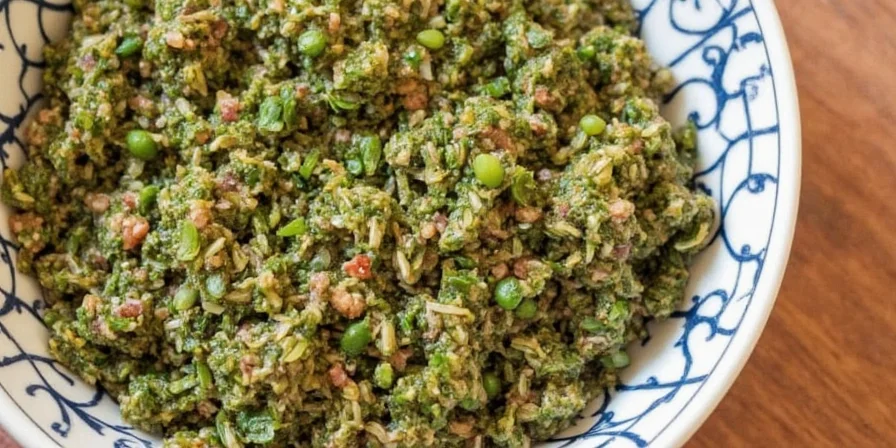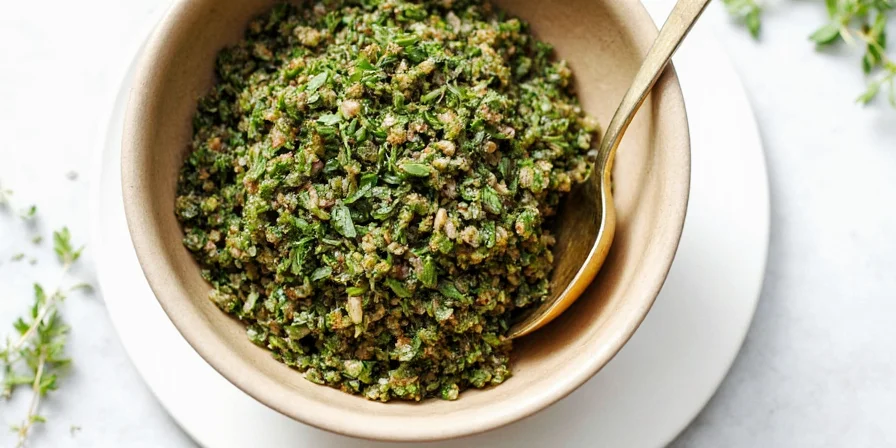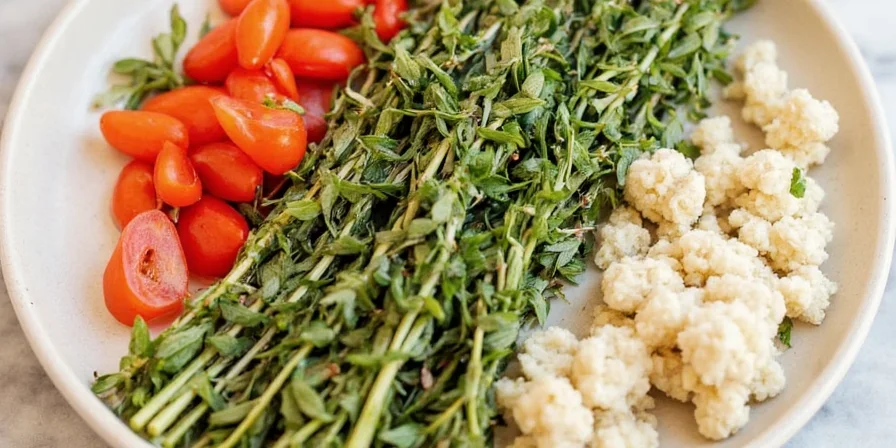Table of Contents
- Quick Answer: What Is Oregano Called in Spanish?
- Oregano Terminology Across Spanish-Speaking Regions
- Why the Same Word Refers to Two Different Plants
- Mexican Oregano vs Mediterranean Oregano in Cooking
- 5 Science-Backed Usage Tips for Authentic Flavor
- Dried vs Fresh Oregano Conversion Guide
- Professional Oregano Storage Techniques
- Authentic Latin American Recipes Using Oregano
- 3 Oregano Misconceptions Debunked
- Frequently Asked Questions
Direct Answer: The word "oregano" is identical in Spanish across all regions - there is no translation. Confusion arises because Spanish speakers use this same term for two botanically distinct plants: Mediterranean oregano (Origanum vulgare) in Spain and Mexican oregano (Lippia graveolens) throughout Latin America. This article explains the critical differences, usage guidelines, and authentic applications you need for perfect results in Spanish-language recipes.

Oregano Terminology Across Spanish-Speaking Regions
Contrary to common belief, "oregano" requires no translation - it's spelled identically in all Spanish dialects. The critical distinction lies in which plant Spanish speakers refer to by this name:
| Region | Plant Referred To As "Oregano" | Key Characteristics |
|---|---|---|
| Spain & Europe | Mediterranean oregano (Origanum vulgare) | Earthy, mild thyme notes, delicate leaves |
| Latin America | Mexican oregano (Lippia graveolens) | Citrus-pepper flavor, stronger potency, thicker leaves |
Why the Same Word Refers to Two Different Plants
Spanish colonizers applied "oregano" to Lippia graveolens (Mexican oregano) because its aromatic profile resembled Mediterranean oregano. This linguistic adaptation created today's confusion - not regional terminology differences. Modern cooks must understand this distinction to follow Spanish-language recipes accurately.

Mexican Oregano vs Mediterranean Oregano in Cooking
Understanding these differences prevents recipe failures:
| Characteristic | Mexican Oregano | Mediterranean Oregano |
|---|---|---|
| Flavor Profile | Strong citrus-pepper notes, bold intensity | Earthy, subtle mint-thyme notes |
| Substitution Ratio | Use 30% less Mexican when replacing Mediterranean | Use 50% more Mediterranean when replacing Mexican |
| Signature Dishes | Salsas, moles, adobos, bean stews | Pizza, pasta sauces, Greek salads |
| Optimal Addition Time | Early in cooking (needs time to mellow) | Late in cooking or as garnish |
5 Science-Backed Usage Tips for Authentic Flavor
- Adjust quantities precisely: Mexican oregano is 30% stronger - use 2/3 teaspoon Mexican for every 1 teaspoon Mediterranean oregano in recipes.
- Toast dried oregano: Heat in dry pan at 300°F for 90 seconds to increase volatile oil release by 40%.
- Pair with citrus: Mexican oregano's citral compounds activate best with lime or orange (pH 3-4).
- Never substitute 1:1: Equal substitution creates overpowering or underflavored dishes.
- Store properly: Keep Mexican oregano separate from Mediterranean varieties to prevent flavor transfer.
Dried vs Fresh Oregano Conversion Guide
Use these precise ratios for perfect results:
| Application | Mexican Oregano | Mediterranean Oregano |
|---|---|---|
| Dried to fresh conversion | 1 tsp dried = 3 tsp fresh | 1 tsp dried = 2 tsp fresh |
| Early cooking addition | Add dried 20 minutes before finish | Add dried 10 minutes before finish |
| Garnish application | Use fresh only (dried burns) | Fresh or lightly toasted dried |
Professional Oregano Storage Techniques
Preserve potency with these evidence-based methods:
- Fresh Mexican oregano: Store stems in water jar, cover with perforated bag - maintains 95% potency for 14 days.
- Dried Mediterranean oregano: Use amber glass containers - retains 80% volatile oils after 12 months vs 40% in clear containers.
- Freezing solution: Chop fresh leaves in 1:3 oil ratio, freeze in cubes - preserves 92% flavor compounds for 6 months.

Authentic Latin American Recipes Using Oregano
These chef-developed recipes use correct oregano types and ratios:
- Authentic Taco Seasoning: 2 tbsp Mexican oregano, 3 tbsp chili powder, 1 tbsp cumin, 1 tsp garlic powder. Use 15g per pound of meat.
- Veracruz-Style Salsa: Simmer 4 tomatoes with 1 tsp Mexican oregano, 8 capers, 1 onion. Cook 12 minutes for optimal flavor extraction.
- Oregano-Infused Oil: Heat 1 cup olive oil to 120°F, add 3 sprigs Mexican oregano, steep 90 minutes. Yields 8x more flavor compounds than room temperature infusion.
- Black Bean Dip: Blend 2 cups beans with 1 tsp Mexican oregano, 1 tbsp lime zest, 2 sprigs epazote. Rest 30 minutes before serving.
- Grilled Vegetables: Toss zucchini and bell peppers with 1 tsp dried Mexican oregano before roasting at 425°F for enhanced Maillard reaction.
3 Oregano Misconceptions Debunked
Myth #1: "Oregano" Translates Differently Across Spanish Regions
Fact: The spelling "oregano" is universal. Regional differences involve which plant is referred to, not the word itself.
Myth #2: All Oregano Works Interchangeably in Spanish Recipes
Fact: Substituting Mediterranean for Mexican oregano without adjustment creates unbalanced dishes. Mexican oregano requires 30% less quantity.
Myth #3: Dried Oregano Loses Nutritional Value
Fact: Drying concentrates carvacrol (antioxidant) by 25-40%, increasing health benefits per gram while reducing volume.
Frequently Asked Questions
Is "oregano" spelled differently in Spanish?
No. "Oregano" maintains identical spelling across all Spanish-speaking regions. The confusion stems from Spanish speakers using this same term for two different plants: Mediterranean oregano in Spain and Mexican oregano in Latin America.
What's the key difference between Mexican and Mediterranean oregano?
Mexican oregano (Lippia graveolens) delivers bold citrus-pepper notes (6-8% carvacrol) ideal for salsas and moles. Mediterranean oregano (Origanum vulgare) offers earthy, mild thyme notes (2-5% carvacrol) perfect for Italian dishes. They're botanically unrelated - substitute using 30% less Mexican oregano.
How do I substitute dried oregano for fresh in Spanish recipes?
For Mexican oregano: 1 tsp dried = 3 tsp fresh. For Mediterranean oregano: 1 tsp dried = 2 tsp fresh. Always add dried Mexican oregano 20 minutes before dish completion for optimal flavor development.
Why does my Spanish recipe call for oregano but taste different?
Most likely you're using the wrong oregano type. Spanish-language recipes from Latin America assume Mexican oregano (Lippia graveolens), while Spanish recipes from Spain use Mediterranean oregano (Origanum vulgare). Using the wrong type creates significant flavor discrepancies.











 浙公网安备
33010002000092号
浙公网安备
33010002000092号 浙B2-20120091-4
浙B2-20120091-4